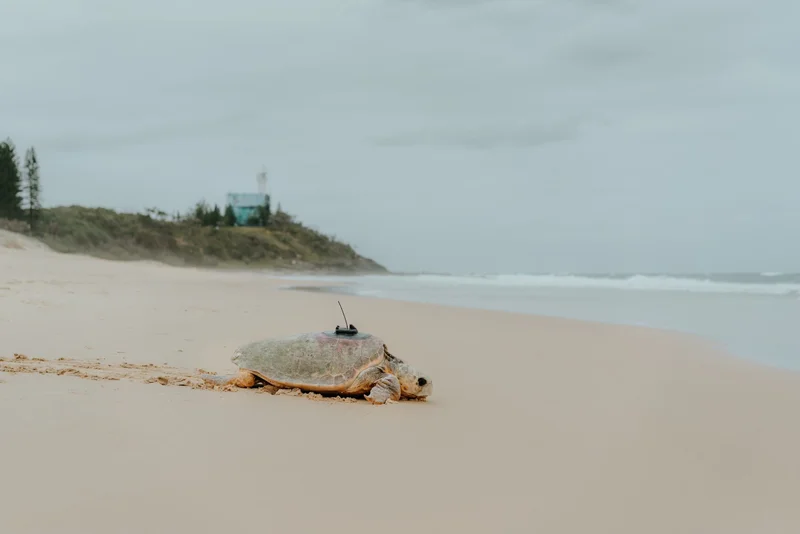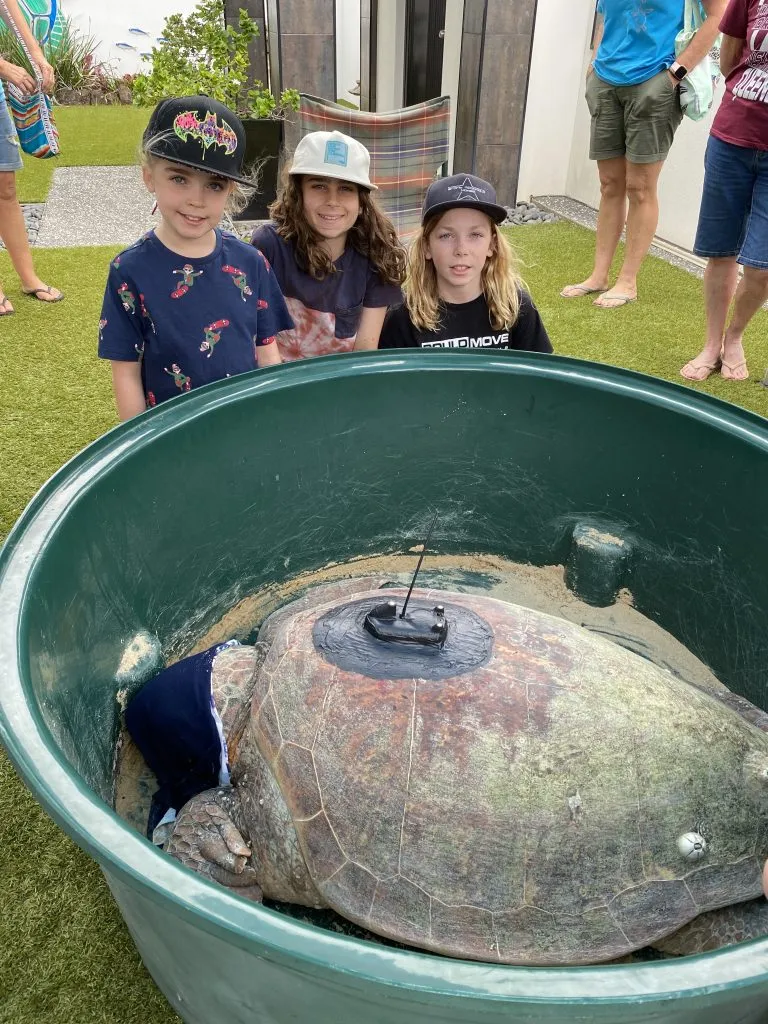‘Truly incredible’: Why this beautiful turtle special
Bullumby is one of the turtles to receive a tracker during the 2022 season.

Her name is Bullumby, meaning “beautiful one’’, and she’s helping carry the survival hopes of her species.
Onlookers enjoyed a unique experience at Buddina beach when they witnessed the endangered loggerhead turtle being released back to the ocean.
The female turtle named by Kabi Kabi Lore/Law Woman and TurtleCare citizen scientist Bridgette Chilli – came in on Thursday night, December 8, to lay her eggs.
It was then that TurtleCare Sunshine Coast volunteers were able to secure her for a very important job.
Bullumby was fitted with a GPS tracking device, as part of a joint research project with the Queensland Government, to provide valuable data on her movements and better understand – and protect – turtle habitats.
Sunshine Coast Council’s TurtleCare Conservation Officer Kate Hofmeister said successfully deploying the tracker was an amazing opportunity to learn about the turtle’s offshore movements.
“This research is mostly focused on the inter-nesting habitat use, which is the area she uses in the ocean between clutches of eggs, close to our coastline,” Mrs Hofmeister said.
“We first met Bullumby in the 2009 turtle season when she was tagged and, thanks to that tag, we were able to recognise her again in 2012, 2019 and now in 2022.
“We’ve seen her eight times in four nesting seasons over 13 years, and each visit to our shores she lays an average of 125 eggs.”

Bullumby with the tracker on her back
Mrs Hofmeister said that in her most recent effort, Bullumby laid a clutch of 131 eggs on Buddina Beach.
"Due to the risk of saltwater inundation, these were relocated by the highly trained TurtleCare volunteers,” Mrs Hoffmeister said.
“After she had finished laying, we gently secured her to install the tracking device.
“Bullumby was calm during the tracker attachment and was kept comfortable with shade and a cool wet towel over her eyes.
“The tracker device will stay on Bullumby for at least six months.”
Bullumby is the fourth loggerhead turtle to participate in the tracking project on the Sunshine Coast, which is a collaborative research project with Dr Colin Limpus from the Queensland Government Department of Environment and Science.
Previous tracking data collected by council was used recently in a large meta-analysis of loggerhead turtle migrations in Eastern Australia published by Michelle Perez from James Cook University.
The open-access publication (https://link.springer.com/article/10.1007/s00227-022-04061-8) provided valuable data on the migration route, habitat distribution and ecological range for a threatened genetic stock of loggerhead turtles.
Mrs Hofmeister was excited to discover how the turtles moved within the Blue Biosphere, which was the first 5km offshore.
“We will be able to use the data to create maps to show where she’s been, use those locations to understand what type of habitat she is using off our coastline between her clutches of eggs and then we will be able to track her at the end of the nesting season when she migrates back to her feeding grounds,” Mrs Hofmeister said.
“Bullumby was released at 3pm, with 100 onlookers respectfully keeping their distance as she calmly made her way down the beach.
“It truly was an incredible and rare experience to witness.”
Eight-year-old Frankie Findlay, who witnessed the release, agreed Bullumby really was beautiful.
“She’s worth keeping all the plastic bags out of the ocean for.”

Frankie, Jonah and Finn were lucky enough to see Bullumby up close.
Mrs Hofmeister said a fifth turtle – the second this season – was fitted with a tracker on Wednesday December 14, after she came ashore to lay her eggs on Buddina beach.
“The turtle is known to us as First Lady, who was first tagged on November 17, 2015, and visits Buddina beach every three to four years,” Mrs Hofmeister said.
Sunshine Coast Council has published the maps on our website so turtle lovers can stay connected with Bullumby and First Lady on their travels.
How you can help these precious creatures
Turtle nesting season is a time when the whole community can come together as a turtle-friendly community to celebrate and help protect these threatened species.
We can all help by keeping plastic waste out of waterways and beaches and cutting the glow of lights after 8pm during nesting and hatchling season between November and May.
To report turtle tracks, new nests and emerging hatchlings on the southern end of the coast, call Sunshine Coast Council’s Turtle Care hotline 0437 559 067 or for sightings from Mooloolaba north, call Coolum and North Shore Coast Care on 0478 435 377.
Pop the numbers in your mobile phone now so you can easily contact our wonderful volunteers.
Our TurtleCare volunteers are highly trained citizen scientists who make an incredible contribution to the ongoing survival of critically endangered turtles by monitoring nesting mothers, relocating nests if necessary for hatchling survival, and providing essential data to support the protection of habitat of these majestic animals.
All TurtleCare activities are conducted under Queensland Turtle Conservation Project permits.
Find out more about our marine turtles, the TurtleCare volunteer program and the tracking projects on council’s website by searching “TurtleCare” or Google “TurtleCare Sunshine Coast”.